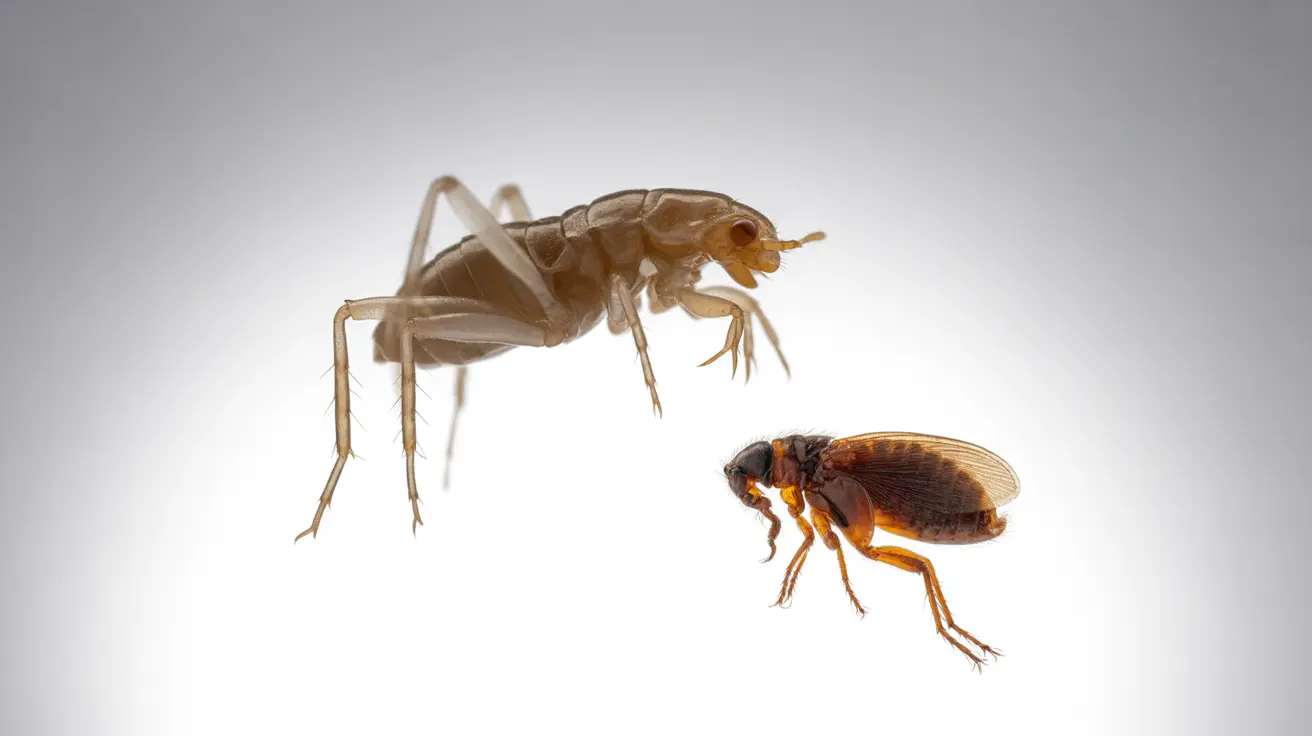When dealing with unwanted parasites in your hair or on your body, it's crucial to correctly identify whether you're dealing with lice or fleas. While both parasites can cause significant discomfort, they require different treatment approaches and prevention strategies. Understanding the distinctions between these pests helps ensure effective treatment and prevents reinfestation.
In this comprehensive guide, we'll explore the key differences between lice and fleas, their symptoms, treatment options, and prevention methods to help you address these unwelcome visitors effectively.
Physical Characteristics and Identification
Lice and fleas have distinct physical characteristics that can help you identify which pest you're dealing with:
Lice Characteristics
Head lice are small, wingless insects about 2-3mm long. They're typically grayish-white or tan in color and move by crawling. They cannot jump or fly. Lice attach their eggs (nits) directly to hair shafts, usually within 1/4 inch of the scalp.
Flea Characteristics
Fleas are reddish-brown, about 1-2mm long, and have powerful back legs for jumping. They can leap up to 13 inches vertically and move quickly through hair or fur. Unlike lice, fleas don't typically lay eggs in human hair.
Symptoms and Signs of Infestation
Lice Infestation Signs
Common indicators of a lice infestation include:
- Intense scalp itching, particularly behind ears and at the neckline
- Visible nits (eggs) attached to hair shafts
- Small red bumps on the scalp, neck, and shoulders
- Sensation of movement in the hair
Flea Infestation Signs
Flea infestations typically present with:
- Small, red, clustered bites, often around ankles and legs
- Intense itching that may worsen at night
- Dark specks (flea dirt) that turn reddish when wet
- Visible fleas jumping on skin or clothing
Treatment Approaches
Treating Lice
Lice treatment requires specific approaches targeting both adult lice and their eggs:
- Over-the-counter or prescription pediculicides
- Manual removal of nits using a special fine-toothed comb
- Treatment of all household members who have close contact
- Washing bedding and clothing in hot water
Treating Fleas
Flea elimination requires a comprehensive approach:
- Treatment of pets with veterinary-approved flea products
- Thorough house cleaning and vacuuming
- Professional pest control services if needed
- Regular inspection of pets and living spaces
Prevention Strategies
Preventing both lice and flea infestations requires different approaches:
Lice Prevention
- Avoid head-to-head contact
- Don't share personal items like combs or hats
- Regular head checks, especially for school-age children
- Prompt treatment of any identified cases
Flea Prevention
- Regular pet treatment with preventive medications
- Routine cleaning of pet bedding
- Regular vacuum cleaning of carpets and furniture
- Maintenance of yard areas to discourage flea populations
Frequently Asked Questions
- What are the common symptoms of lice versus flea infestations in humans?
Lice typically cause intense scalp itching and visible nits attached to hair shafts. Flea infestations usually result in clustered, red bites primarily on the lower body and ankles, with visible jumping insects.
- How do lice and fleas spread, and what are the primary ways to prevent their infestations?
Lice spread through direct head-to-head contact or sharing personal items. Prevent by avoiding such contact and not sharing personal items. Fleas typically spread from pets or infested environments. Prevent by treating pets regularly and maintaining clean living spaces.
- What treatments are most effective for eliminating lice and fleas, and how do they differ?
Lice require specific pediculicides and manual nit removal, focusing on the affected person. Flea treatment needs a comprehensive approach including pet treatment, environmental cleaning, and possibly professional pest control.
- Can fleas lay eggs in human hair, and how do flea eggs compare to lice nits?
Fleas rarely lay eggs in human hair, preferring pet fur and environment. Lice nits are firmly attached to hair shafts near the scalp, while flea eggs fall off into the environment.
- What health risks are associated with lice and fleas, and when should you seek medical attention for either infestation?
Lice primarily cause discomfort and potential secondary skin infections from scratching. Fleas can transmit diseases and cause severe allergic reactions in some people. Seek medical attention if you develop signs of infection, severe allergic reactions, or if over-the-counter treatments aren't effective.




